-
American Indians
This page contains information and resources related to genocide, cultural genocide and related historical context. We humbly suggest resources for learning, healing and making amends.
Wounded Knee Massacre
In 1890, US soldiers, sent to stop a religious movement among Lakota people and other Plains Indians called the Ghost Dance, massacred hundreds of Lakota men, women and children at Wounded Knee. Watch a short video on the massacre from Ken Burns' film American Buffalo. In 1990, Congress formally apologized to the Lakota 100 years after the massacre. Lakota people continue to seek justice and redress for many actions by the US government and others since 1890. Read more in the featured articles below.
For an interactive learning experience, check out Genocide Watch's Genocide Watch's Wounded Knee TimestreamWounded Knee Timestream.
Here are some recent articles related to seeking healing and justice in the aftermath of the Wounded Knee Massacre:
- "A Girl called 'Lost Bird' is Finally At Rest"
- "Native Americans Urge Scottish Museum to Return Artifacts From Wounded Knee Massacre"
- "Tribes Want Medals Awarded for Wounded Knee Massacre Rescinded
Boarding Schools
The National Native American Boarding School Healing Coalition has a history of US Indian boarding schools, including a primer and a curriculum on U.S. Indian Boarding Schools, which includes the map below.
Watch short video excerpts from PBS The American Experience: "We Shall Remain: Wounded Knee" (children taken away from their families, and the impact the education system had on children and their families). PBS has also produced a two-hour film and accompanying website Unspoken: America's Native American Boarding Schools.
Scholar Maggie Blackhawk sees the roots of this policy in an 1846 Supreme Court decision United States v. Rogers, in which the Court established the "plenary power doctrine."
We encourage you to also read the poem Indian Boarding School: The Runaways by Louise Erdrich (Turtle Mountain Band of Chippewa) and to view these video clips:
- Dennis Banks recalls his own experience and the trauma it caused in "What They Took Away: Reflections on Native Boarding Schools"
- Native American Rights Fund: Boarding School Healing (voices of survivors)
- MSNBC series The Vanished feature on boarding school survivors
-
Native News Online: Indian Boarding Schools - A Dark Chapter in History
UPDATE (April 2023) - Secretary HAALAND's report shows 2 Indian boarding schools in IL (in Peoria and in Des Plaines)
In May 2022, Secretary Haaland issued the report, summarized in a PBS Newshour story. Here is one article that describes the site in Peoria (the other was in Des Plaines, what is now Maryville Academy). You can also read use CTRL+F to search for Illinois in the full report and find details of each boarding school in Appendix A & B, and a set of maps in Appendix C.
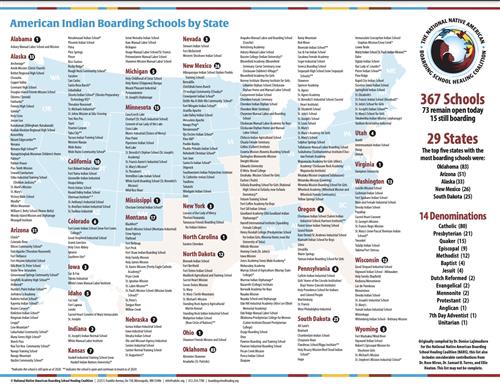 The map above is from the Resources page of the National Native American Boarding School Healing Coalition website.
The map above is from the Resources page of the National Native American Boarding School Healing Coalition website.Governments of the USA and Canada confront this history
In 2008, Canadian Prime Minister Stephen Harper apologized for the history of assimilation policies in the boarding schools, and a National Truth and Reconciliation Commission determined that the schools were part of "a conscious policy of cultural genocide." In March 2022, Pope Francis issued an apology for the Catholic Church's role. For more information
-
article in the New York Times on the Pope's apology
-
National Centre for Truth and Reconciliation, which includes history and the apology in various languages
-
June 2021 discovery of unmarked graves of children
In June 2021, Sec’y of the Interior Deb Haaland announced federal investigation & the announcement & official memorandum outlining the process. The report came out in early May 2022.
- Watch the PBS Newshour feature story on the report and read or search the entire text of the Federal Indian Boarding School Initiative Investigative Report and the 435-page Appendix with details about each of the schools.
- The report indicates that there were two boarding schools in Illinois. An article from Illinois Public Media details one of the two sites - the one in Peoria (the other was in Des Plaines, what is now Maryville Academy).
- You can also watch Secretary Haaland talk about the intergenerational trauma caused by boarding schools.
Healing, Education and Taking Action
Part of healing is acknowledging and learning more about the history specific to boarding schools as well as broader American Indian history and culture. To guide your learning, we encourage you to explore resources from the National Native American Boarding School Healing Coalition, which includes curriculum on U.S. Indian Boarding Schools and Facing History and Ourselves' resources for teaching about Canada's residential schools (which may be a model for a future curriculum for US boarding schools).
Another part of the healing process is returning the remains of children who died at boarding schools to their communities. Explore those stories below.
- PBS film Home From School: The Children of Carlisle
- StoryCorps Returning Home: Three Oneida Children Find a Final Resting Place
A third part of healing is taking action. The National Native American Boarding School Healing Coalition asks us to urge our elected officials (Rep. Schneider, Sen. Duckworth & Sen. Durbin) to support pending legislation “THE TRUTH AND HEALING COMMISSION ON INDIAN BOARDING SCHOOL POLICIES IN THE U.S. ACT” (H.R.5444 AND S.2907). At DHS, we will have paper petitions that you can sign, but you can also make a phone call or contact them through their websites. See our Take Action page.
-
Learning, Connecting and Making Amends
One way to make amends and to help heal the wounds of horrors like the Wounded Knee Massacre is to learn more history, culture, terminology, and how to be an ally to Indigenous people. Explore the resources in this section, then look at the other sections on Land and Significant People.
Learn from the National Museum of the American Indian:
- The Impact of Words and Tips for Using Appropriate Terminology: Am I Using the Right Word?
- Land Acknowledgments
- Essential Understandings & guides for teaching
Learn about Native cultures and efforts to revive Native cultures:
- ChiNations Youth Council, their work on the First Nations Garden & a story about the garden from WBEZ
- Chicago American Indian Community Collaborative (CAICC)
- Evanston's Gichigamiin Indigenous Nations Museum
- the Potawatomi Nation Cultural Heritage Center
- Dr. Brenda Child has written a lot about the Jingle Dress (featured on the Google Doodle)
- See How Unangax Culture and Dance Resurrected, Despite WWII Internment Camps (& learn about Unangax̂ (Aleut) Evacuation and Internment during World War II)
- the importance of Indigenous language
- "These Canoes Carry Culture"
- AIM (the American Indian Movement) Heart of the Earth Survival School
- Chicago as a center of Native urban culture: Over 140 Native nations are represented among the approximately 38,000 Native people who live in the Chicago area; read more starting on p. 17 of the report on The State of Racial Justice for American Indian Chicagoans from UIC. You can also watch a video exploring the ways "Chicago has always been Indian country."
- read about the Native American Graves Protection and Repatriation Act of 1990, or NAGPRA
Other sources for healing and learning to be a good ally:
-
LAND - removal, reservations, allotment
“They made us many promises, more than I can remember, but they never kept but one; they promised to take our land, and they took it.” - Red Cloud, Lakota
The map below is from Aaron Carapella's collection Tribal Nations Maps, used with permission. We encourage you to visit Carapella's site and to zoom in on this map for a more detailed view.
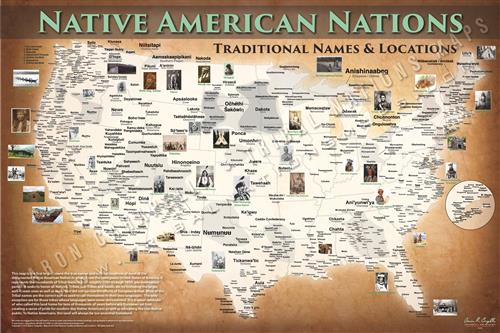
The Invasion of America is a time-elapsed video showing the encroachment of the United States through settlement and land acquisition through treaties and other US government actions between 1776 and 1887. You can also explore this in more detail at the website, where you can enter your zip code and see which nations ceded land and under what circumstances. The results will link to more resources, including primary source documents, helping you dive deeper into history.
We also encourage you to read about "How American Indian Reservations Came To Be" from PBS.
Indian Removal
- Click on this interactive from the National Museum of the American Indian, which includes a fact sheet for easy reference.
- How Did Six Different Nations Try to Avoid Removal? (includes the Potawatomi, who were removed from the northern IL area where our schools are; see also the related 1836 Treaty)
- Explore the Diné/Navajo Long Walk 1868
Interactive Map
- Native Land Digital is an app to help map Indigenous territories, treaties, and languages. Type in your zip code and then explore and learn.
- Native Land is an indigenous-led organization. You can read more about this project and its purpose here.
- They also have a Teacher's Guide.
Allotment
The 1887 Dawes Act set up a system of "allotment" aimed at breaking up the cultural practice of community ownership of land in an attempt to assimilate American Indians into US society. The US government divided reservations into individual plots assigned to the head of household who accepted the terms. All "surplus" land was then sold to settlers, totaling over 90 million acres. See more details at the National Park Service website.
-
Significant Native American Individuals
Below is a gallery of just a sampling of significant Native American individuals. In 2022, DHS displayed these and many other "Notable Native Americans" from Aaron Carapella's website and other sources. We encourage you to read their biographies.
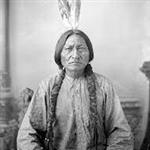
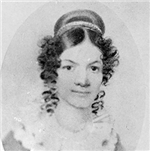
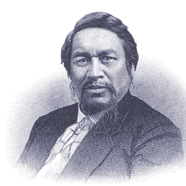
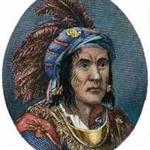
Pictured left to right are Sitting Bull (Leader of the Hunkpapa Lakota tribe who led his people through years of resistance), Jane Johnston Schoolcraft (the first known American Indian literary writer), Ely Parker (fought with the Union during the Civil War, eventually appointed as Commissioner of Indian Affairs under Ulysses S. Grant), and Pontiac (Ottawa Indian chief who organized a group resistance).
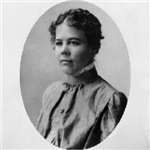
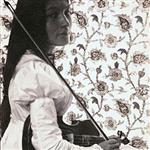
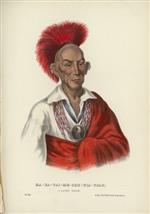
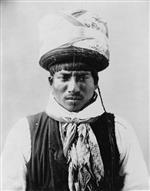
Pictured left to right are Lydia Conley (First Native American to argue a case in front of the Supreme Court), Zitkala-Ša (writer, editor, translator, educator, and political activist sharing stories about the treatment of Native Americans), Blackhawk (Sauk leader and warrior who fought in the Blackhawk War of 1832), and Chief Billy Bowlegs (activist against the Indian Removal Act).

